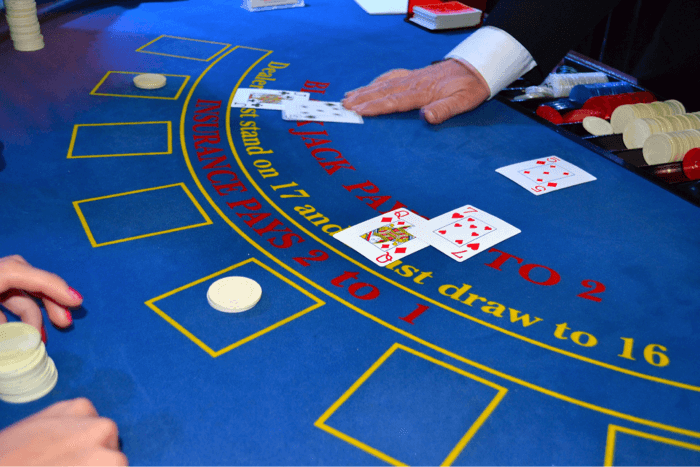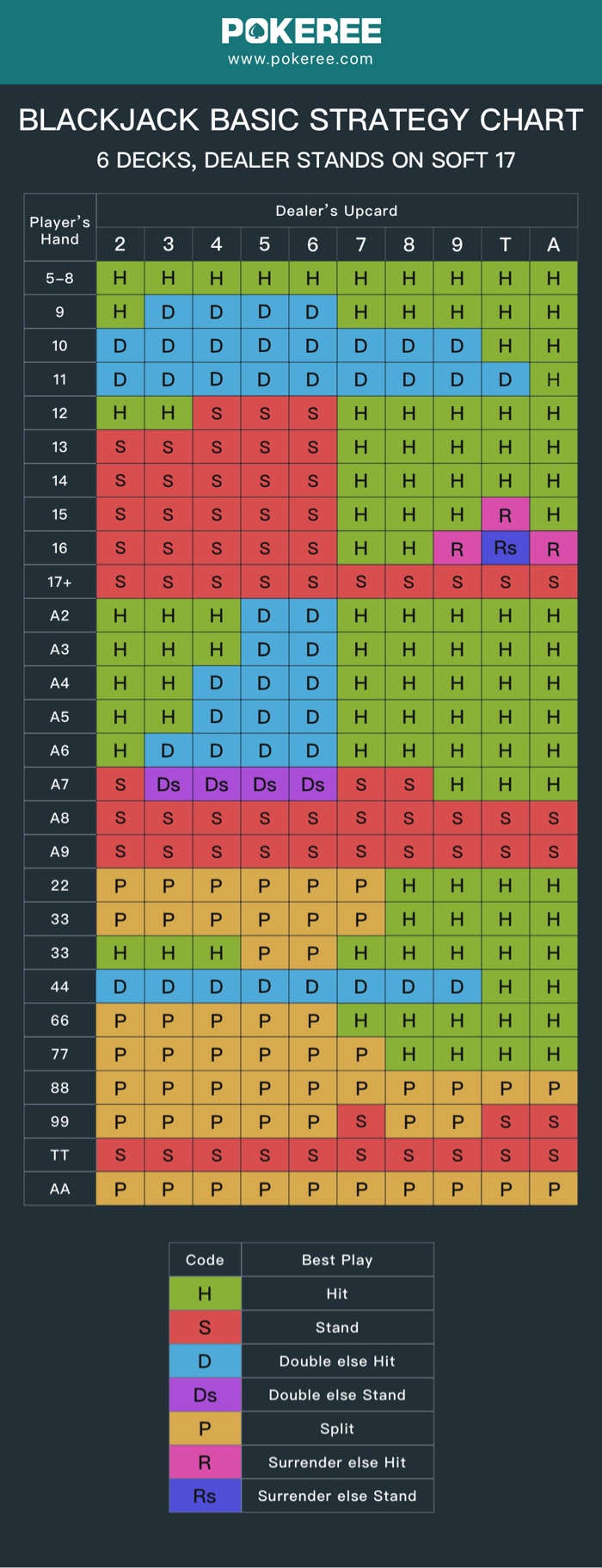Introduction
Blackjack, also known as 21 in North America, has become one of the most popular casino games in the last century and has spread throughout the world. Slots (slot machine games) have overtaken it in popularity in the twenty-first century, but it remains one of the most popular casino card games and is available in almost all casinos, both online and offline.
Blackjack is a casino banking game, which means that players compete against the house rather than against one another. The goal is to get a hand total that is closer to 21 than the dealer without going over 21 (busting).
Equipment
Blackjack is played using a 52-card international deck without jokers. Casinos often use several decks mixed (called a shoe) to both speed up the game (with more cards in play, you don't have to reshuffle after every single hand) and make card counting more difficult. Card counting is a strategy for gaining an advantage over the casino by keeping track of the proportions of different value cards that remain in play.
The number of decks varies for each casino; however, the shoe may include anything from two to eight decks. The frequency of re-shuffling differs from casino to casino and, of course, is determined by the number of decks used. Another way to reduce the value of card counting is to reshuffle the deck frequently.
Blackjack is played on a specially built table in casinos. The casino has a permanent dealer, and there is room for up to eight simultaneous people to play against the dealer. Each player has a specific playing area in front of him where he may place cards and bets.
On the blackjack table, the betting limits should be clearly displayed on a sign. Some of the most important rules, such as "Blackjack pays 3 to 2" and "Dealer must draw on all 16's and stand on all 17's," are usually printed on the table.
Here’s an example of Blackjack table

Card Values
When playing Blackjack, the numeral cards 2 through 10 have their face values, Jacks, Queens, and Kings have a value of 10, and Aces can have either a value of 1 or 11. The Ace is always worth 11 unless it would take the hand over 21, in which case it is valued as 1.
Any hand having an Ace worth 11 is called a soft hand. All other hands are called hard hands.
A starting hand of a 10 valued card and an Ace is known as a Blackjack or natural, and it beats all other hands. If both the player and the dealer have Blackjack, the game is a push (tie), which means that neither the player nor the bank wins, and the bet is refunded to the player.
How to Play Blackjack
In a game of Blackjack, players always go first before the dealer shows their face-down card. However, before beginning official play, a player may choose to do one of two things: buy insurance or surrender. A player may buy insurance in case the dealer holds a blackjack. Insurance is equal to the original bet and is returned to the player if the dealer has a blackjack. Insurance should be purchased only if the dealer's face-up card is a 10, Jack, Queen, King, or Ace. A player may also surrender their hand if they are certain they will lose. Surrendering refunds half of the player's bet, while the other half is paid to the dealer.
Beginning with the one on the dealer's left, players try to get their hand closer to or equal to 21 than the dealer's without going bust. This may be done through hitting, standing, splitting, and doubling down.
Hitting
A player may opt to "hit" and get another card from the deck. Hitting is signaled by either saying "hit" or tapping the table.
Standing
A player might choose to "stand" and keep the cards that were dealt to them. Standing is signaled by waving a flat hand over their cards.
Splitting
Only if the cards dealt to them are pairs may a player choose to "split" them. Splitting the pair creates two separate hands, each with its own bet equal to the player's original bet. The dealer then deals them two more cards to complete each hand, and the player may either hit, stand, split, or double down.
Doubling Down
If a player is confident in his or her hand, he or she might "double down" by double their initial bet. Following the initial bet, the dealer deals one more card, following which the player must stand.
Basic Strategy
While the casino usually always has the advantage, players may improve their chances by using a statistically proven method known as Basic Strategy. Here are some general rules for Basic Strategy:
1. Never, ever buy insurance. It's not worth it for the most part. If the dealer does hold a blackjack, you should take the loss.
2. If your initial cards are 9-11, always double down. In this case, adding another card will only help you get closer to 21 without bursting.
3. If your hand is 12-17+ and the dealer's upcard is 2-6, always stand. In this case, the dealer will hit and either get a lower value than yours or go bust.
4. If the dealer's upcard is 7-A and your hand is a 12-14 or an Ace/2-6, always hit. If the dealer has a 7-A, they are in the best position, and it is better to try your luck with another card.
5. If you have a pair of 2's, 3's, 6's, 7's, 8's, or 9's and the dealer's upcard is 2-6, always split.
6. If you have two aces, you should always split.
A Basic Strategy Chart for a game of blackjack with six decks is attached below.




